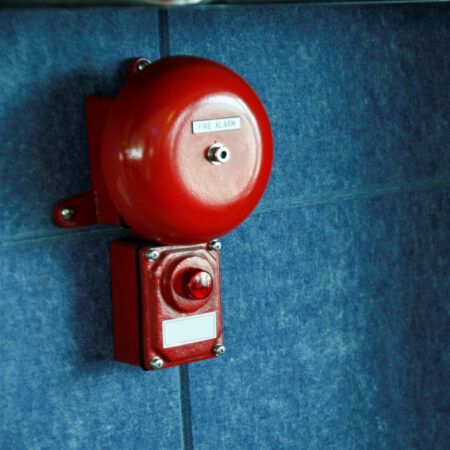The alarm rings extra loud, everyone starts moving fast around you, and the teacher is giving directions in her “stern” voice. Your heart rate raises, your eyes widen, and you look around at your friends. You wonder what’s happening. It’s not the usual schedule; we were supposed to visit the gym now. You’re scared and worried. Why are we lining up? Where are we going?
A safety drill can be scary for a child. Loud noises and the change to a child’s classroom routine can be disregulating. This blog will discuss the role of safety drills, children’s emotions about safety drills, and how teachers can prepare children in advance for safety drills.
What are safety drills?
The goal of safety drills is to support the safety and well-being of children and adults in schools and childcare centers before a disaster occurs by helping them be well prepared for a potential emergency. Most schools and childcare centers practice a variety of safety drills. These drills may include fire drills, lockdown drills, active shooter drills, bus evacuation drills, school evacuation drills, and severe weather or “shelter-in-place” drills. These safety drills are usually practiced multiple times during the school year. All children and adults in the school or childcare center participate in the drills, and instruction, play, and other daily routines are stopped during this time. The length of the drill can vary.
Talk about and practice drills before they happen
It can help young children to talk about safety drills before they happen. This gives them a sense of what to expect so that everything isn’t unusual and frightening. Be sure to have conversations about drills and expectations before the first safety drill occurs. First, describe the drill in general terms, such as “We will hear a loud noise. Then we all move into a certain space or position. We wait there until the grown-up in charge of the school tells us that it’s time to go back to class.”
Next, practice the specific drill. For example, for a fire drill, make an alarm noise using a phone or computer and follow the typical rules to line up and exit the building. When the class has arrived at the designated location outside, take attendance and give the “all clear” signal. Finish by walking back into the building and settling into the classroom.
After the drill, debrief with the children. What did you notice? What happens when you hear the alarm? What do we need to do next? For example, “When you hear the bell, we will leave all our activities and line up at the door quickly and quietly.” Focusing on the steps that children need to follow while acknowledging children’s feelings can be helpful in the debriefing conversation.
Feelings are normal
It is scary to think about emergencies such as an active shooter in the building, a bomb, a fire, or a severe weather event. It is normal for a young child to be worried and express high emotions, such as crying or screaming, during a safety drill. Other children might experience stress in a different way by freezing in place or not following expectations of the drill.
Most children see their school or childcare center as their “safe space.” When an emergency happens in this space, their view of safety is broken. Even if it is a drill (a manufactured event), it may seem and feel real. After a drill, when you gather the children together in the classroom for a conversation, emphasize how you are all safe and together and that the drill was not a real emergency. It was practice, so that if there is an emergency, everyone will know what to do. Acknowledge any feelings that children have, explain how the adults at school or childcare are there to keep them safe, and then move back into your regular routine of the day. Routine helps children recover from stress.
Loud noises and bright lights
Drills will occur throughout the year, and regular practice and preparation will help children. Different drills are announced with unique sounds, such as a tornado siren or fire alarm. If you know which bells will be ringing and which lights will be flashing, you can show the children in advance. Just knowing where the lights and sounds will be coming from may help the children know what to expect.
In particular for children with sensory issues, sounds and visual input can be overwhelming. For these children, more care may need to be taken. A particular child may naturally put their hands over their ears to block the sound of the loud alarm. If your rule is to put your hands at your sides when walking in the hall, consider making an accommodation for this child by having a pair of noise cancelling headphones in your emergency kit. Another child, who you know in advance may become disoriented by flashing lights, may need an adult partner in line to hold hands with to stay safe. If you have a child in your care who elopes or tends to run during stressful events, be ready to pair them with a teacher for safety.
Children may worry about safety drills or get scared during safety drills. With teacher preparation, the acknowledgement of emotions, and careful planning, the stress and fear associated with safety drills can be reduced as they become more routine.

Natalie Danner
Dr. Natalie Danner is a Content Specialist for the Illinois Early Learning Project. She has worked in university-based early childhood teacher preparation programs in Nebraska, Oregon, and Connecticut and as an early childhood teacher and school leader in New York City and Arizona. She earned her Ph.D. in early childhood special education from the University of Illinois at Urbana-Champaign.
Biography current as of 2021


